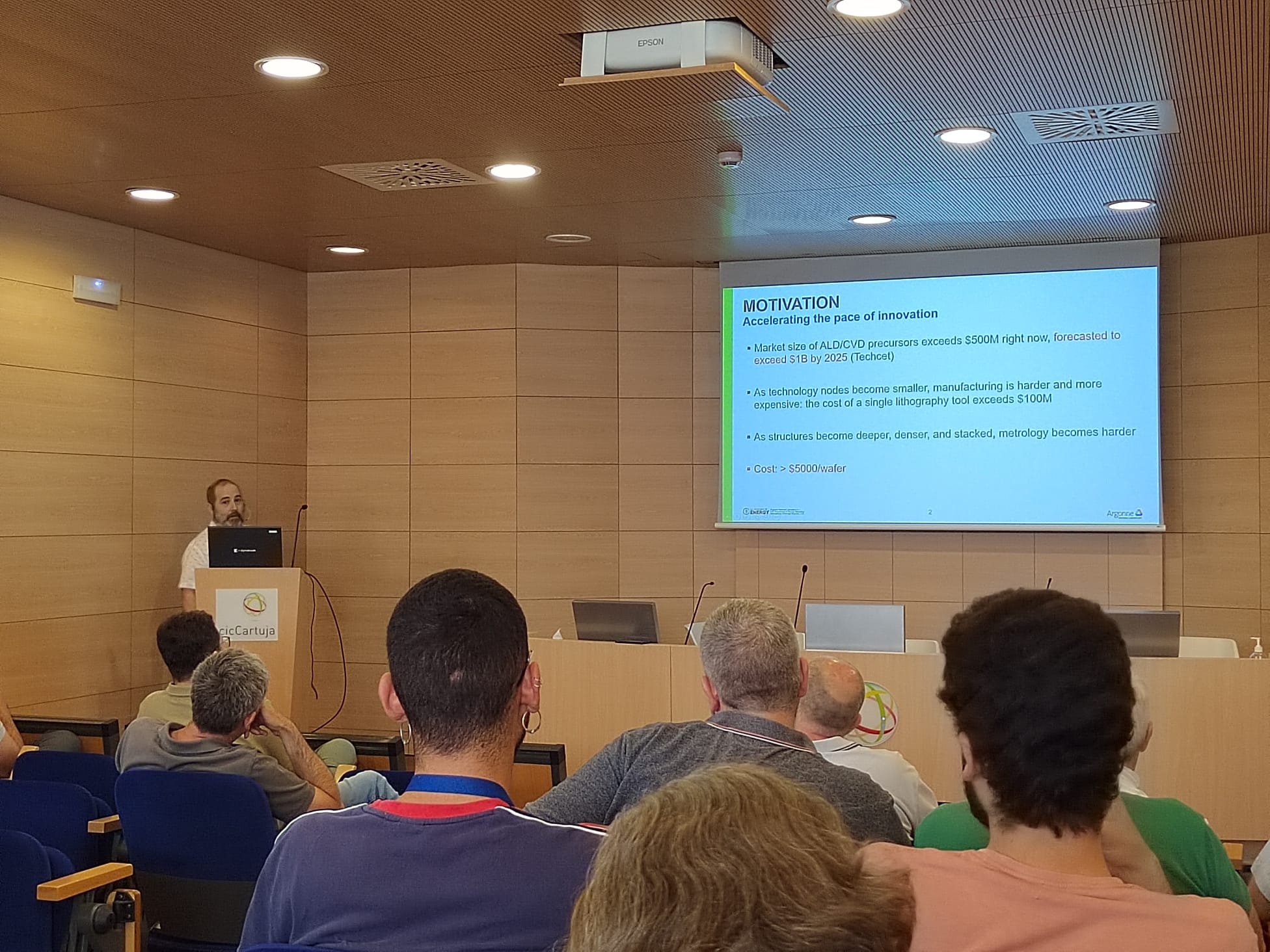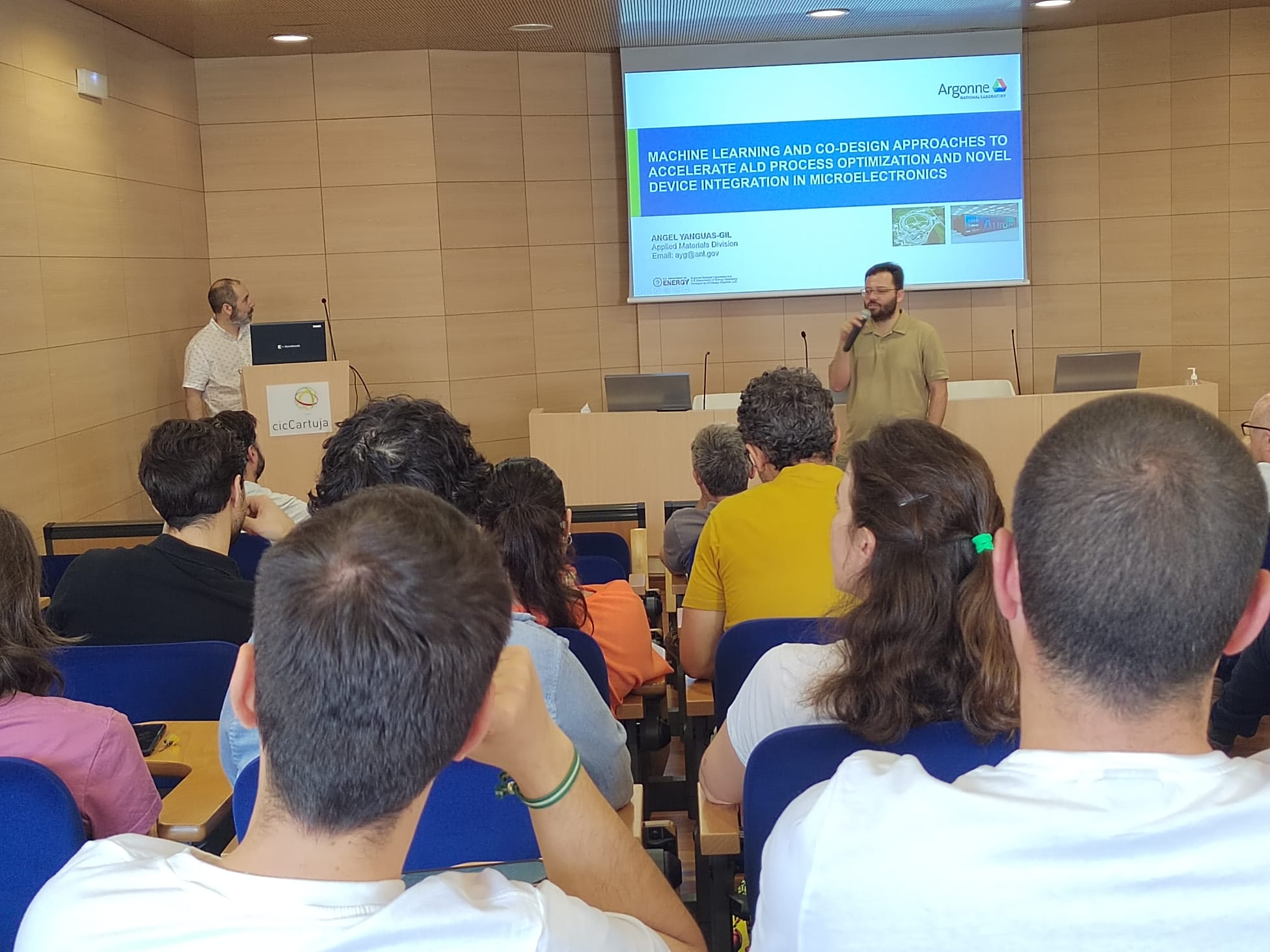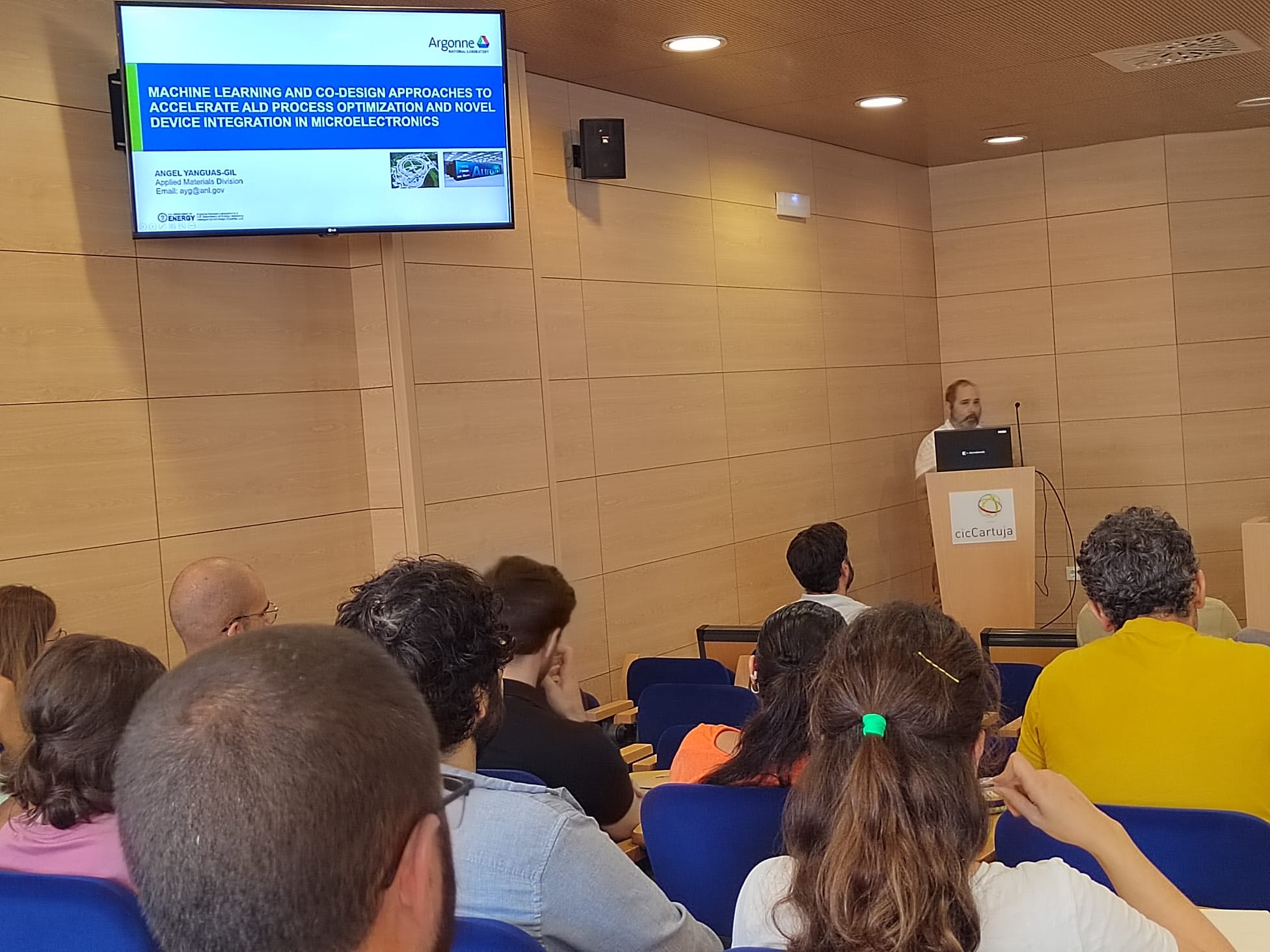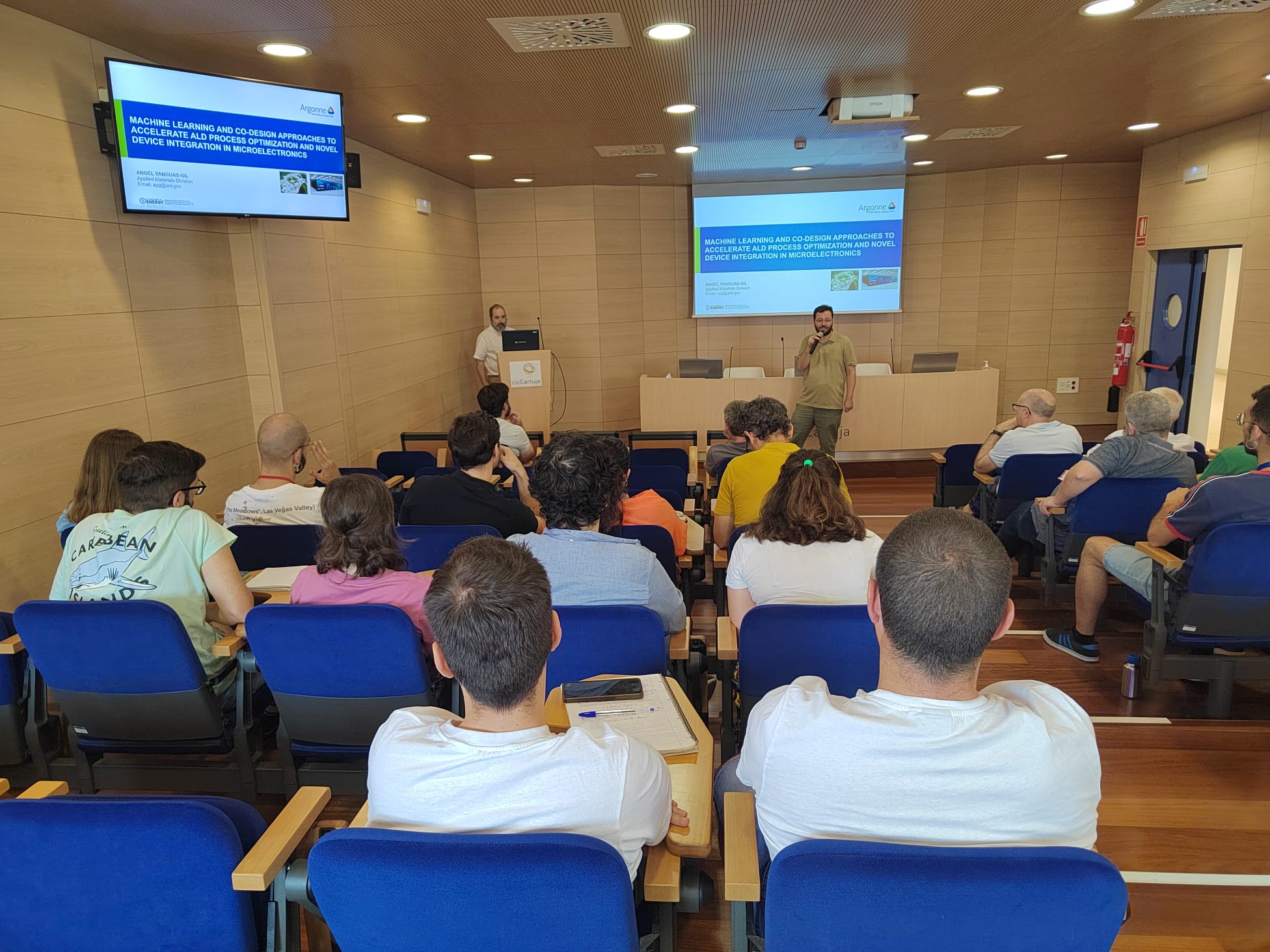News
On June 26, the Institute of Material Sciences of Seville hosted a conference by Dr. Ángel Yanguas (Argonne National Laboratory, USA) entitled Machine learning and co-design approaches to accelerate ALD process optimization and novel device integration in microelectronics in the framework of the 3DScavengers project.
The researcher explained how to use machine learning and AI to accelerate innovation in the field of materials, and especially, in the field of energy. This is one of the objectives of the work that Dr. Yanguas is developing in the US using the atomic layer deposition technique.
In this way, Dr. Yanguas investigates ways to accelerate the manufacturing process of applications, develop sensors and applications, as well as monitor processes in the energy area.
Short biography
Source: Argonne National Laboratory official website
With a background in theoretical physics, my current research activities focus on two areas: materials growth, and neuromorphic computing.
In the area of materials, the focus of my research is understanding the fundamentals of materials growth, with a specific emphasis on the areas of advanced electronic materials and semiconductor processing. My research leverages the advanced computing, X-ray characterization, and the cutting-edge materials synthesis capabilities at Argonne to understand the synthesis of nanomaterials using chemistry-based techniques such as atomic layer deposition. Active areas of research include wide bandgap semiconductors for advanced power electronics, the development of in-situ capabilities to probe the structure of nanomaterials, and the development of state of the art, multiscale simulation tools to predict the scale up of thin film growth and the dynamics of infiltration for high aspect area materials. These are key issues for the fabrication of 3D architectures in semiconductor electronics, or for the integration of thin film technologies into energy storage applications. While my primary focus is on nanomaterials, recently we have applied a similar methodology to additive manufacturing.
In the area of neuromorphic computing, my research focuses primarily on the exploration of novel architectures and algorithms to design smart systems and sensors inspired on the insect brain. My primary interest is on areas that go beyond the current state of the art in machine learning, such as the development of systems with the ability to adapt to changes in their environment in real time and capable of exhibiting task-dependent learning and processing. As part of our current activities in this field, I am currently leading a project from DARPA’s Lifelong Learning Machines program focused on the development of systems capable of dynamic learning. In addition to the exploration of novel architectures and algorithms, my research also focuses on understanding how to best translate these architectures into hardware, both through the exploration of existing neuromorphic chips, and through the development of design principles that will help guide the design of novel materials and devices. Potential applications include the development of more power-efficient, smarter sensors that could find applications in areas such as self-driving vehicles and drones, and internet of things related applications such as infrastructure monitoring or networked sensors.



